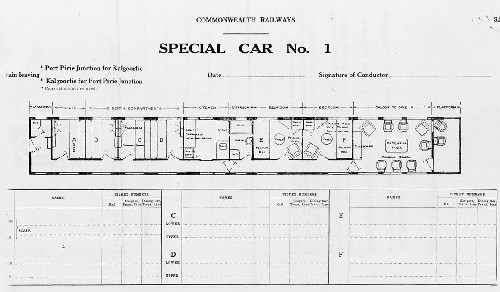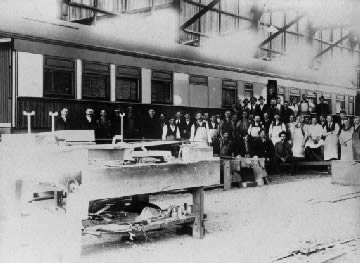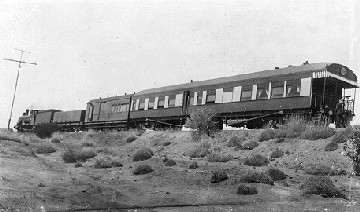Diagram showing the layout of the carriage (also known as Special Car No. 1)
National Archives of Australia. Adelaide, B 300/2 item 5373 pt 4.
This luxurious carriage is 23.3m long, 4.3m high and 3.2m wide - the highest and widest carriage on the Australian Railway system, all to accommodate ten people, including two train staff. The pressed steel ceilings were the highest quality available from Wunderlich and fittings included ornate lights and cathedral glass panels in each door. It is constructed of Australian timbers with elaborate woodcarvings featuring the Australian, British and State coats of arms.
The 'Prince of Wales' carriage undergoing maintenance in the Port Augusta Workshops.
Photograph: National Railway Museum, Port Adelaide
In addition to four two-berth sleeping compartments, it includes two elaborate single berth sleeping compartments. Separated by a partition, the rooms can be converted to one large room and used as a private sitting room or bedroom as required. The bathroom featured a full length bath and overall the carriage has a very spacious feel to it. At the time that Curtin travelled in the carriage, the saloon which was used for dining or meeting, opened onto an observation platform.
As it is fully
self-contained with kitchen and bathroom the carriage could be easily
attached to other than the regular passenger trains. During the war years,
this meant that it could be attached to the military specials that were
at one time the only trains operating across the Nullarbor.
In 1928 the Commonwealth Railways commissioned a film about the Trans Australian Railway as the Commissioner was inspecting the line. Hence the special carriage can be seen - complete with the awning in place above the observation platform. The awning was renewed in 1940.
Photograph: National Railway Museum, Port Adelaide
Back to Prime Minister


